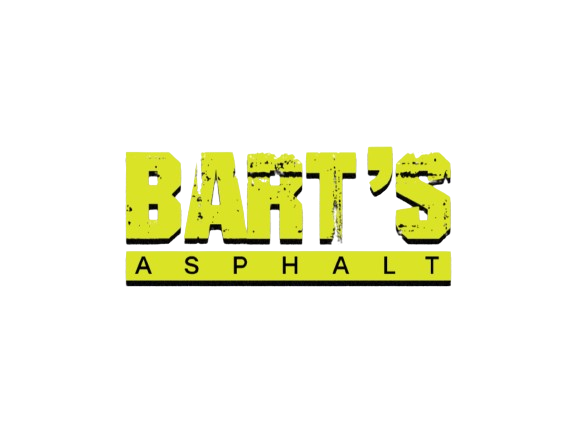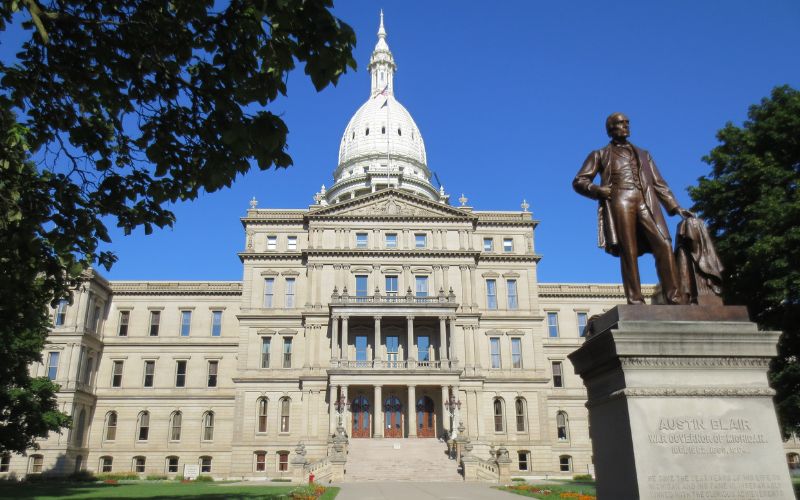Lansing’s commercial and government districts represent the beating heart of Michigan’s capital city, with asphalt surfaces serving as critical infrastructure that supports daily operations, economic activity, and public service. From the bustling corridors around the State Capitol to the diverse commercial zones that define the city’s economic landscape, these surfaces endure constant stress that demands sophisticated maintenance strategies.
The importance of well-maintained asphalt extends far beyond simple aesthetic considerations. These surfaces are living infrastructure that directly impacts economic performance, public safety, and the overall functionality of Michigan’s governmental and commercial centers. Every square foot of pavement tells a story of urban resilience, technological innovation, and strategic infrastructure management.
Understanding Lansing's Unique Commercial Infrastructure
Lansing presents a complex commercial landscape that challenges traditional infrastructure maintenance approaches. The city’s geographical location and extreme climate create a unique environment that subjects asphalt surfaces to relentless environmental stress. From the government district surrounding the State Capitol to the diverse commercial corridors that weave through the city, each area demands a specialized approach to surface maintenance.
The seasonal variations in Lansing are particularly challenging. Winters bring dramatic freeze-thaw cycles that can rapidly deteriorate asphalt surfaces, while summers introduce intense heat that creates additional structural stress. State government buildings, commercial districts, and critical infrastructure must withstand these extreme conditions while maintaining optimal functionality and appearance.
Michigan’s capital city experiences unique traffic patterns that further complicate infrastructure maintenance. Government districts see concentrated traffic during legislative sessions, while commercial areas experience dynamic usage patterns that create complex wear scenarios. The interaction between governmental operations, business activities, and public transportation creates a sophisticated infrastructure ecosystem that requires expert management.
Diagnostic Approaches for Commercial and Government Properties
Modern asphalt maintenance in Lansing’s critical districts requires diagnostic approaches that go far beyond traditional visual inspections. Advanced technologies like ground-penetrating radar and infrared scanning provide unprecedented insights into pavement condition, detecting subsurface variations and potential structural weaknesses that would remain invisible to the naked eye.
Comprehensive diagnostic processes involve a multi-layered approach to understanding surface conditions. Professionals conduct detailed analyses that examine surface integrity, base layer stability, drainage patterns, and specific traffic load characteristics. For government properties, this means creating maintenance strategies that ensure accessibility, safety, and long-term infrastructure preservation.
Diagnostic Approaches for University Area Properties
Modern asphalt maintenance in the university district requires sophisticated diagnostic approaches that transcend traditional visual inspections. Advanced technologies like ground-penetrating radar and infrared scanning provide unprecedented insights into pavement condition, detecting subsurface variations and potential structural weaknesses that would remain invisible to the naked eye.
Traffic pattern analysis has become a critical component of diagnostic strategies. By comprehensively mapping vehicle movements, load concentrations, and seasonal variations, property managers can develop predictive maintenance approaches that anticipate potential issues before they become critical problems. This data-driven method allows for targeted repairs that address specific stress points with unprecedented precision, moving beyond generalized maintenance strategies.
The diagnostic process involves a multilayered approach to understanding pavement conditions. Professionals conduct a detailed surface condition analysis that goes far beyond simple visual assessment. This comprehensive evaluation examines the stability of the base layer, assesses drainage patterns, and analyzes specific traffic load characteristics. Environmental exposure factors are carefully considered, creating a holistic understanding of the pavement’s overall health and potential vulnerabilities.
Seasonal variations play a crucial role in diagnostic approaches. The unique traffic patterns associated with the University of Michigan create distinctive stress points that require specialized assessment techniques. Move-in and move-out periods, football weekends, and special campus events all generate concentrated traffic loads that can create complex wear patterns. Diagnostic teams must develop nuanced approaches that account for these unique usage cycles, ensuring that maintenance strategies are precisely tailored to the property’s specific challenges.
Government District Asphalt Maintenance Challenges
Government district surfaces present unique maintenance challenges that extend beyond standard commercial requirements. These areas must simultaneously meet stringent accessibility standards, maintain exceptional safety levels, and provide a professional appearance that reflects the importance of public infrastructure.
Security considerations add another layer of complexity to maintenance strategies. Government properties require maintenance approaches that can be implemented with minimal disruption while maintaining strict security protocols. This means developing sophisticated techniques that can address infrastructure needs without compromising operational security.
Business District Surface Protection Strategies
Commercial corridors in Lansing demand maintenance strategies that balance functional performance with aesthetic considerations. These surfaces serve as critical economic infrastructure, directly impacting business performance, customer perception, and property values.
Maintenance approaches must minimize business disruption while providing comprehensive surface protection. This requires sophisticated scheduling, advanced application techniques, and a deep understanding of each business district’s unique operational requirements.
Economic Considerations for Property Managers
The financial implications of asphalt maintenance represent a critical consideration for Lansing’s government and commercial property managers. The economic landscape of infrastructure maintenance reveals a compelling narrative of strategic investment and long-term cost optimization. Reactive repair approaches can cost between $20-$50 per square foot, while proactive maintenance strategies typically range from $5-$10 per square foot. Complete pavement replacement represents the most significant expense, often exceeding $75-$100 per square foot.
These financial figures tell a powerful story of infrastructure management. Businesses and government entities can potentially save up to 70% on long-term infrastructure expenses by implementing comprehensive maintenance strategies. The savings extend far beyond immediate repair costs, encompassing reduced liability risks, improved property functionality, and enhanced long-term asset preservation.
The economic benefits of strategic maintenance are particularly pronounced in Lansing’s critical government and commercial districts. Well-maintained surfaces contribute to improved property values, create positive impressions for visitors and stakeholders, and demonstrate a commitment to professional infrastructure management. For government properties and commercial businesses alike, this approach transforms infrastructure maintenance from a reactive expense to a proactive investment strategy.
Seasonal Maintenance Planning
Seasonal maintenance in Lansing requires a sophisticated approach that anticipates the unique challenges of Michigan’s extreme climate. The dramatic temperature variations and intense weather conditions demand a comprehensive, strategic maintenance methodology that goes far beyond standard surface treatment.
Late fall emerges as a critical window for comprehensive infrastructure preparation. During this period, maintenance professionals conduct thorough repairs, implement precise crack sealing techniques, and apply protective treatments designed to create resilient surfaces. The primary objective is to develop an infrastructure strategy that can withstand extreme road treatments, frequent plowing, and the constant cycle of freezing and thawing that characterizes Michigan’s winters.
The maintenance approach must be dynamic and adaptive. Different areas of Lansing – from government districts to commercial corridors – experience unique environmental stresses that require tailored maintenance strategies. Government buildings might require more intensive protection due to their critical operational importance, while commercial districts need approaches that minimize business disruption while ensuring surface durability.
Technology and Innovation in Urban Asphalt Management
Technological innovations are fundamentally transforming infrastructure maintenance in Lansing’s critical districts. Advanced diagnostic technologies now provide unprecedented insights that enable predictive, data-driven maintenance strategies. These sophisticated systems go far beyond traditional inspection methods, offering real-time assessment capabilities that can identify potential issues before they become critical problems.
Smart monitoring systems represent a revolutionary approach to infrastructure management. These advanced technologies can continuously assess surface conditions, predict potential maintenance needs, optimize repair scheduling, and provide comprehensive data that allows for more strategic decision-making. By leveraging real-time analytics and sophisticated sensor technologies, property managers can transform reactive maintenance approaches into proactive, predictive infrastructure management strategies.
Eco-friendly maintenance solutions are emerging as a critical area of technological innovation. Manufacturers are developing advanced asphalt mixes that incorporate recycled materials, significantly reduce carbon footprint, and provide enhanced durability. These sustainable approaches represent more than just an environmental consideration – they are becoming a sophisticated strategy for long-term infrastructure management that aligns economic and environmental responsibilities.
The integration of these technological innovations allows Lansing’s government and commercial properties to approach infrastructure maintenance with unprecedented precision and strategic insight. By combining advanced diagnostic tools, smart monitoring systems, and sustainable material technologies, property managers can develop comprehensive maintenance strategies that protect critical infrastructure while optimizing economic and environmental performance.
Compliance and Safety Considerations
Compliance and safety represent critical considerations for asphalt surfaces in Lansing’s government and commercial districts. These surfaces must meet complex regulatory requirements that go far beyond simple maintenance standards. ADA accessibility guidelines create a comprehensive framework that demands precise attention to detail, ensuring that every surface provides safe and equitable access for all individuals.
Government properties face particularly stringent safety and accessibility requirements. These surfaces must accommodate diverse user needs, including emergency vehicle access, pedestrian safety, and compliance with multiple layers of federal, state, and local regulations. The complexity extends beyond simple surface treatment, requiring a holistic approach that considers every aspect of infrastructure design and maintenance.
Safety considerations demand a comprehensive approach that addresses multiple dimensions of infrastructure management. Proper surface design must account for pedestrian movement patterns, emergency vehicle requirements, lighting conditions, surface evenness, and drainage capabilities. Each of these factors plays a crucial role in creating surfaces that are not just functional, but genuinely safe and accessible for all users.
Environmental and Sustainability Factors
Environmental sustainability has become a critical consideration in modern infrastructure maintenance. For Lansing’s government and commercial districts, this approach goes far beyond simple environmental responsibility, representing a sophisticated strategy for long-term infrastructure management and resource conservation.
Advanced sustainable maintenance technologies offer a comprehensive approach to infrastructure preservation. These innovative solutions focus on developing maintenance strategies that minimize environmental impact while maximizing surface performance. Eco-friendly approaches incorporate recycled materials, reduce carbon footprint, and develop more sustainable application techniques that protect both the immediate infrastructure and the broader environmental ecosystem.
The long-term benefits of sustainable infrastructure maintenance extend far beyond immediate environmental considerations. By implementing green infrastructure strategies, government and commercial properties can potentially reduce long-term maintenance costs, improve overall surface performance, and demonstrate a commitment to environmental stewardship. These approaches transform infrastructure maintenance from a purely functional activity into a strategic environmental investment.
Traffic Flow and Infrastructure Management
Effective traffic flow management represents a critical consideration for Lansing’s government and commercial districts. Surface design and maintenance must go far beyond simple pavement treatment, creating comprehensive infrastructure solutions that optimize movement, ensure safety, and support the city’s broader operational needs.
Strategic infrastructure design involves a sophisticated approach to space utilization and traffic management. Property managers must carefully consider how surfaces can facilitate efficient movement, enhance safety, and support the diverse needs of government operations and commercial activities. This requires a holistic understanding of traffic patterns, user requirements, and long-term urban planning objectives.
Advanced marking techniques and intelligent design can significantly improve infrastructure functionality. By implementing strategic line striping, creating clear traffic flow patterns, and developing design solutions that maximize available space, property managers can transform surfaces from simple passageways into sophisticated urban infrastructure elements that support the city’s broader economic and operational goals.
Bart's Asphalt Approach to Lansing Commercial Maintenance
Bart’s Asphalt has developed a comprehensive approach to commercial and government district maintenance that goes far beyond standard service offerings. Our methodology combines deep local knowledge, advanced technological capabilities, and a commitment to providing exceptional infrastructure solutions tailored to Lansing’s unique environment.
Local expertise forms the foundation of our approach. Our team possesses an intimate understanding of Lansing’s specific infrastructure challenges, including the unique environmental conditions, regulatory requirements, and operational needs of government and commercial properties. This hyperlocal knowledge allows us to develop maintenance strategies that provide maximum protection and long-term value.
Advanced diagnostic technologies enable us to provide unprecedented insights into infrastructure condition and maintenance requirements. We utilize state-of-the-art assessment tools to create comprehensive maintenance strategies that address both immediate protection needs and long-term infrastructure preservation. Our approach combines cutting-edge technology with deep local understanding to deliver exceptional results.
Conclusion
Professional asphalt maintenance represents a critical strategy for protecting and enhancing Lansing’s governmental and commercial infrastructure. By implementing sophisticated, technology-driven maintenance approaches, property managers can preserve critical surfaces, reduce long-term expenses, and support the city’s economic vitality.
The future of urban infrastructure maintenance lies in proactive, comprehensive strategies that combine advanced technologies, sustainable approaches, and deep local understanding. For Lansing’s government and commercial districts, this means developing infrastructure solutions that are not just functional, but truly transformative.
Frequently Asked Questions
Q: How often should government and commercial properties have their asphalt surfaces assessed? A: We recommend comprehensive professional inspections annually, with additional assessments after extreme weather events or significant changes in usage patterns. This approach ensures early detection of potential issues and allows for proactive maintenance strategies.
Q: Can maintenance be performed with minimal disruption to operations? A: Absolutely. Our specialized approaches are designed to minimize operational disruption, often utilizing strategic scheduling and advanced application techniques that allow critical government and commercial operations to continue uninterrupted.
Q: What makes Bart’s Asphalt different from other maintenance providers? A: Our unique combination of local expertise, advanced technological capabilities, and commitment to comprehensive solutions sets us apart. We provide more than just surface maintenance – we offer strategic infrastructure management tailored to Lansing’s specific needs.
Ready to protect your Lansing commercial or government property’s infrastructure? Contact Bart’s Asphalt for a comprehensive maintenance assessment that goes beyond standard solutions.



